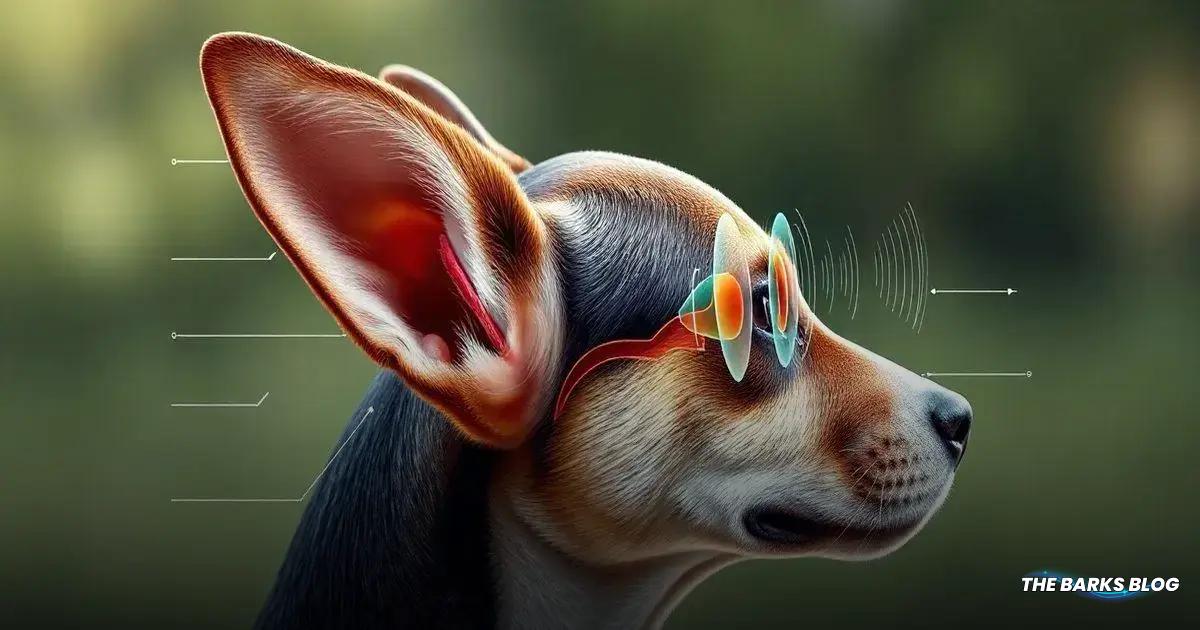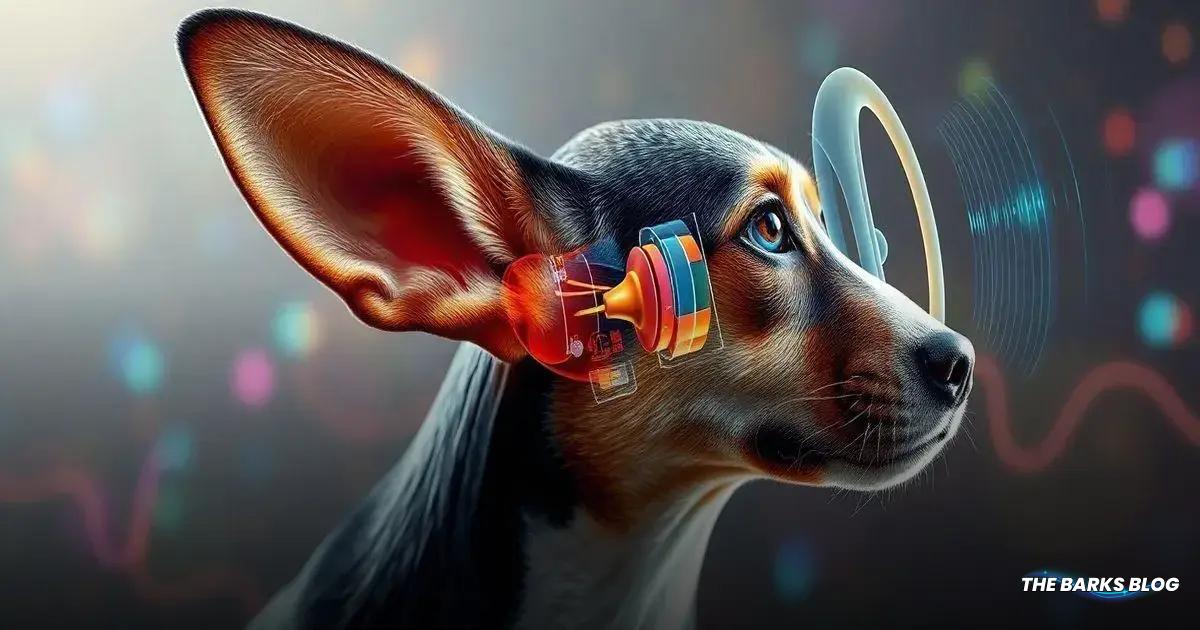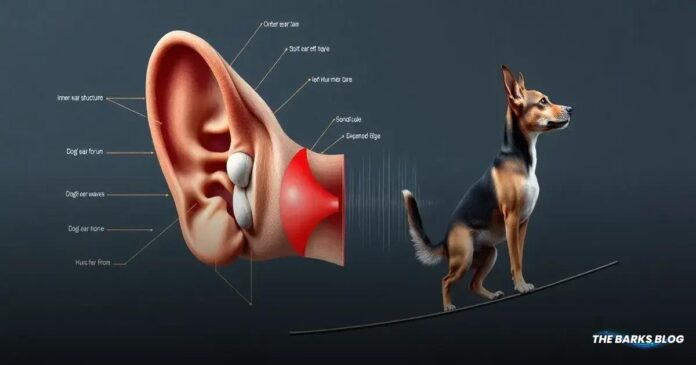Understanding dog ear anatomy is essential for pet owners to recognize the structure and function of their dog’s ears, which play a crucial role in hearing and balance. Regular veterinary checkups and proper ear hygiene can help prevent common issues like ear infections and foreign bodies, ensuring optimal ear health and comfort for dogs.
Did you know that the average dog can hear around four times better than a human? Dog ear anatomy is fascinating and plays a crucial role in their ability to hear and maintain balance.

Understanding Dog Ear Structure
The dog ear structure is comprised of three main parts: the inner ear, middle ear, and outer ear, each playing a vital role in how dogs hear and maintain balance.
Inner Ear: This is the most complex and arguably the most important part of a dog’s ear. It consists of the cochlea, which is directly responsible for hearing, and the vestibular system, which helps with balance. The cochlea converts sound vibrations into nerve impulses that the brain interprets as sound.
Middle Ear: This area includes the eardrum and three tiny bones known as the ossicles (hammer, stirrup, and anvil). These components are housed in a small, air-filled chamber. The eustachian tube connects the back of the nose to the middle ear, allowing air to flow and equalize pressure.
Outer Ear: The part of the ear that we can see is called the pinna or ear flap. The shape of the outer ear varies significantly among different breeds, with some having erect ears, like German Shepherds, while others, such as Cocker Spaniels, have long, drooping ears. The outer ear captures sound waves and directs them into the ear canal. Notably, the canine ear canal is much deeper than that of humans, consisting of both a vertical and a horizontal canal.
Dogs have more than a dozen muscles that allow their ears to move independently, enhancing their ability to detect sounds from various directions. This unique structure, rich in nerves and blood vessels, contributes to a dog’s exceptional hearing ability.

Common Ear Issues in Dogs
Common ear issues in dogs are quite prevalent and can affect their overall health and well-being. Regular veterinary checkups are essential, as vets typically examine a dog’s ears during routine visits to check for potential problems.
Ear Infections: One of the most common issues is ear infections, which can occur due to bacteria, yeast, or parasites such as mites. Symptoms may include redness, swelling, and discharge from the ear, as well as excessive scratching or shaking of the head.
Foul-Smelling Ears: A foul odor emanating from your dog’s ears can be a sign of an underlying infection or other issues. If you notice an unpleasant smell, it’s crucial to consult your veterinarian for a thorough examination.
Foreign Bodies: Sometimes, foreign objects like grass seeds or small insects can get lodged in a dog’s ear canal, leading to discomfort and potential infection. Signs that your dog may have a foreign body in their ear include pawing at the ear, shaking their head, or showing signs of pain.
Hygiene Maintenance: Keeping your dog’s ears clean is vital to preventing issues. Regular cleaning, as recommended by your veterinarian, can help reduce the likelihood of infections and other problems. Always use products specifically designed for canine ear cleaning to avoid irritation.
Being proactive about your dog’s ear health can make a significant difference in their quality of life. If you notice any unusual symptoms, don’t hesitate to reach out to your vet for advice and treatment options.
Conclusion
Understanding dog ear anatomy is essential for every pet owner. By knowing how a dog’s ears function and being aware of common ear issues, you can take proactive steps to ensure your furry friend’s health and well-being.
Regular checkups and ear cleaning can help prevent discomfort and infections, allowing your dog to enjoy their amazing sense of hearing without any hindrances.
Remember, if you notice any signs of ear problems, consult your veterinarian promptly to keep those adorable ears in top shape!
FAQ – Frequently Asked Questions about Dog Ear Anatomy and Health
What are the main parts of a dog’s ear?
A dog’s ear consists of three main parts: the inner ear, middle ear, and outer ear, each playing a crucial role in hearing and balance.
How can I tell if my dog has an ear infection?
Signs of an ear infection in dogs may include redness, swelling, discharge, foul odor, excessive scratching, and head shaking.
Why do some dogs have different ear shapes?
The shape of a dog’s ears varies by breed and is designed to effectively capture sound waves. For example, some breeds have erect ears while others have long, drooping ears.
How often should I clean my dog’s ears?
It’s best to consult your veterinarian for recommendations on how often to clean your dog’s ears, as it can vary based on the dog’s breed and health.
What should I do if I notice a bad smell coming from my dog’s ears?
A foul odor from your dog’s ears can indicate an infection or other issues. It’s important to contact your veterinarian for an examination.
Can I use human ear cleaning products on my dog?
No, you should only use products specifically designed for canine ear cleaning, as human products can irritate a dog’s ears.




